#kishii yukino
Text





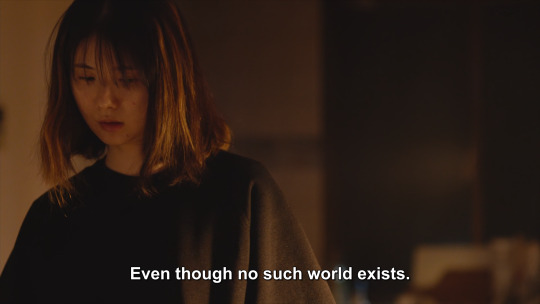
226 notes
·
View notes
Photo





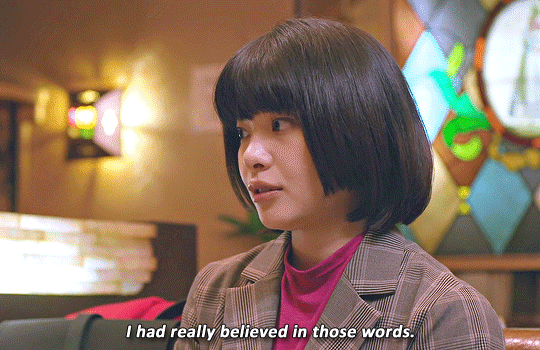
Koisenu Futari | 1.03
#i wasnt gonna gif this show but then i was like hey...... i did that too......#koisenu futari#kishii yukino#chi gifs
239 notes
·
View notes
Text
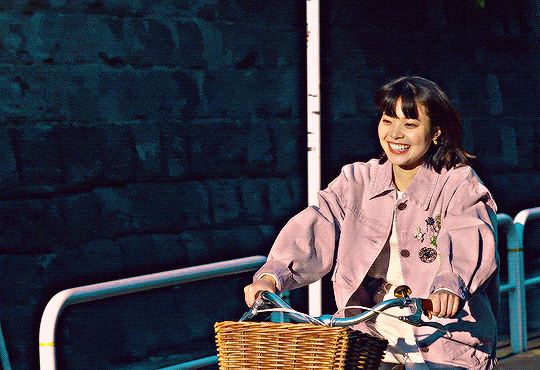

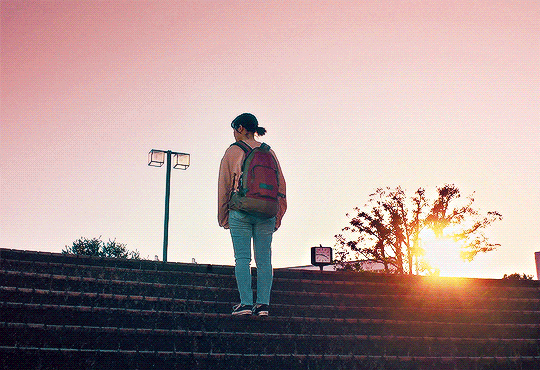


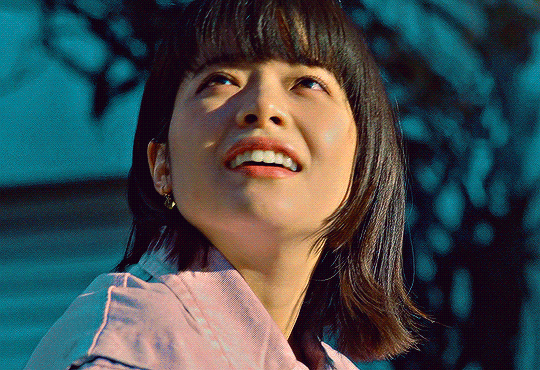
dailyasiandramas’ sunday throwback ★ [WEEK 25]
KODAMA SAKUKO
KOISENU FUTARI 恋せぬふたり [2022] Dir. Doi Shohei
#koisenu futari#恋せぬふたり#kishii yukino#kodama sakuko#jdramaedit#jdramasource#lgbtq+#lgbtqedit#lgbtsource#asiancentral#asiandramasource#dailyasiandramas#asiandramasthrowback#throwback: results#ours#wocedit#japaneseartistsinc#dramasource#womenoftv
93 notes
·
View notes
Text
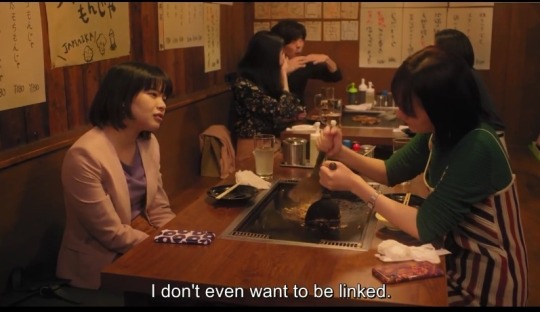

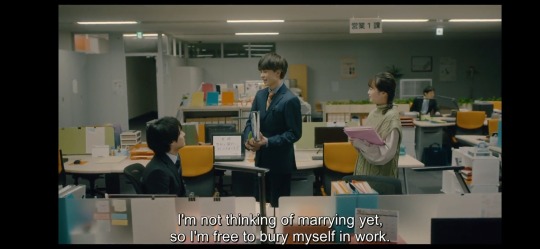
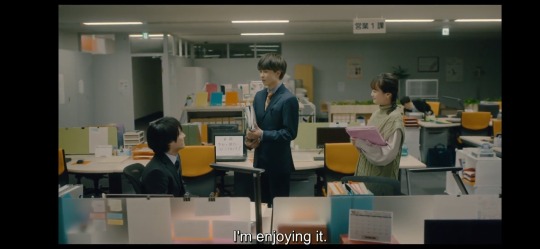


Koisenu Futari episode 1 (2022)/ Cherry Magic the Movie (2022)
#kodama sakuko#fujisaki nozomi#koisenu futari#cherry magic#cherry magic the movie#kishii yukino#ryo sato#nocticola art#aroace#iwd2023#asexual#aromantic
76 notes
·
View notes
Photo
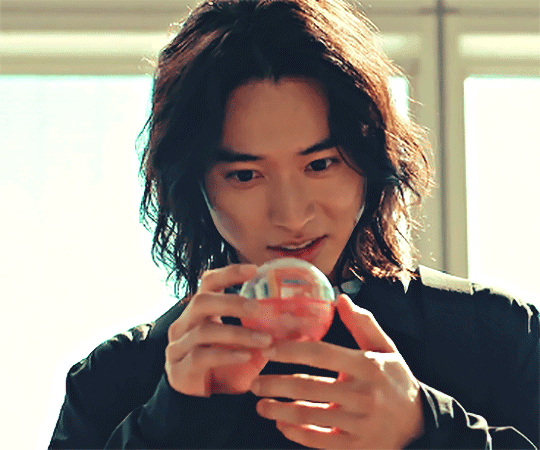

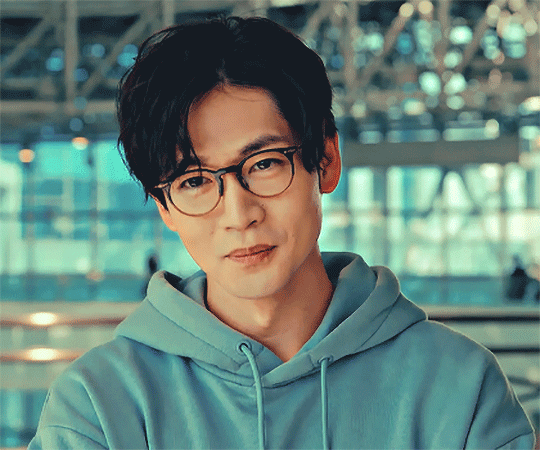
You haven't changed a bit.
🧸 ATOM NO KO 1.09
#atom no ko#children of atom#japaneseartistsinc#jdramaedit#userdramas#asiandramasource#dailyasiandramas#asiandramanet#asiancentral#yamazaki kento#kishii yukino#matsushita kouhei#mygifs#jdrama#atom gif#ep 09
106 notes
·
View notes
Photo
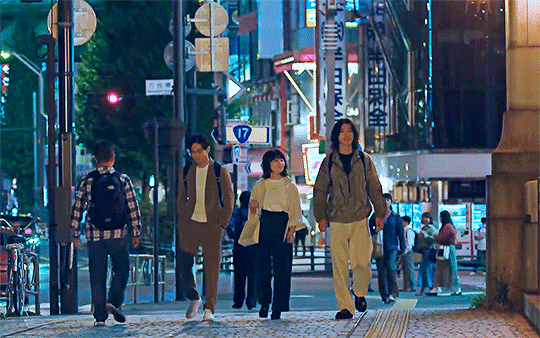

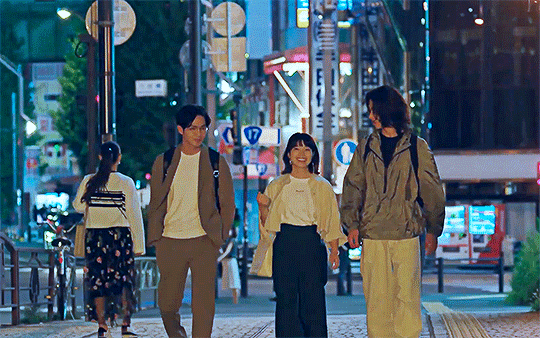
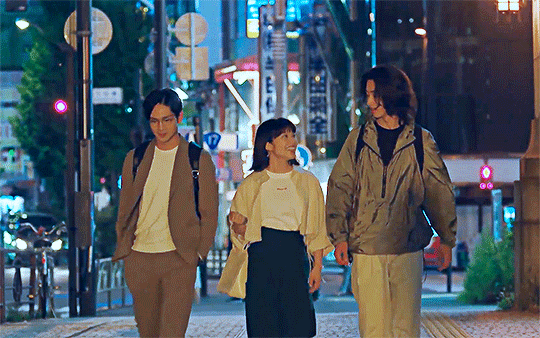
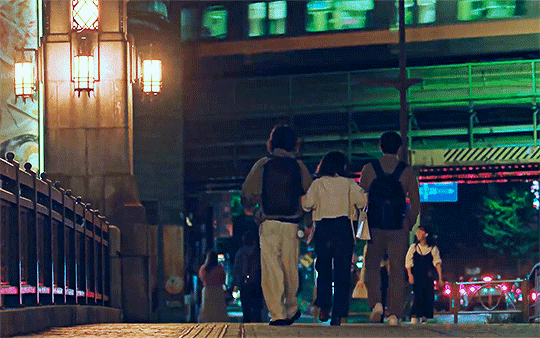
Let’s make a good game together!
ATOM NO KO (2022)
#atom no ko#children of atom#jdramaedit#asiandramanet#userdramas#dailyasiandramas#asiancentral#jdrama#yamazaki kento#kishii yukino#matsushita kouhei#lextag#usermare#userstorge#bysya#atomnokoedit#ep 2#we love a trio!!!#it's still a bit yellow but gosh this scene was like triple layers of yellow + orange filters i died colouring
136 notes
·
View notes
Text

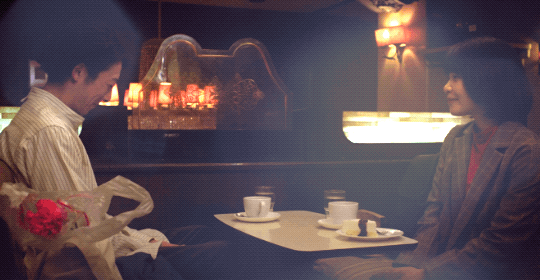

Happy Ace Week to my favourite aroaces on TV!
#yeah ok they're the ONLY aroaces on TV what of it#I still love them#mine#koisenu futari#two people who can't fall in love#kodama sakuko#kishii yukino#takahashi issei#takahashi satoru#ace week#asexual#asexuality#aromanticism#aromantic#aro stuff#ace stuff#aroace tag
120 notes
·
View notes
Photo



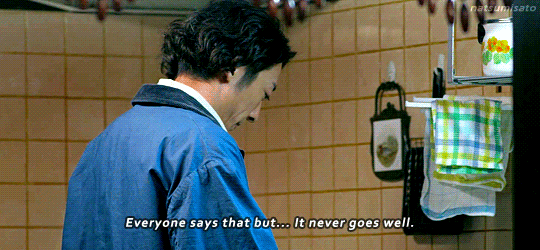
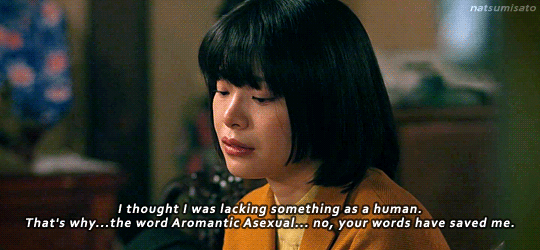
TV Appreciation Week 2022
Day 6: favorite quote from a tv show
↳ Koisenu Futari (Episode 1)
#TVweek2022#tvarchive#lgbtedit#Koisenu Futari#aroace#aromantic#asexual#Kodama Sakuko#Takahashi Satoru#Kishii Yukino#Takahashi Issei#KF 1x01#My Edits#My Gifs#GifKF
171 notes
·
View notes
Photo
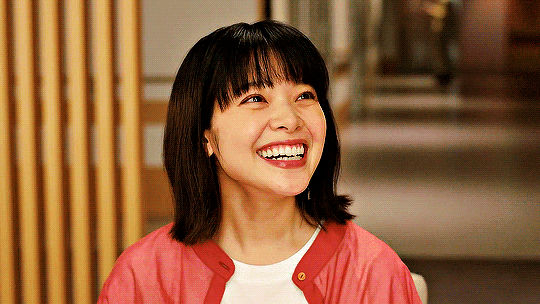
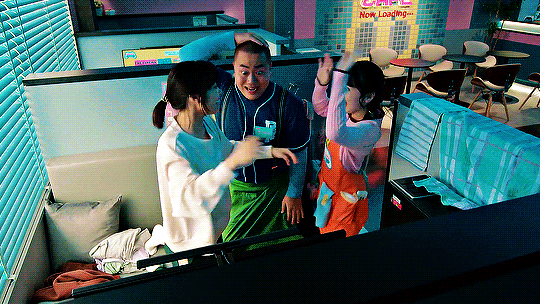


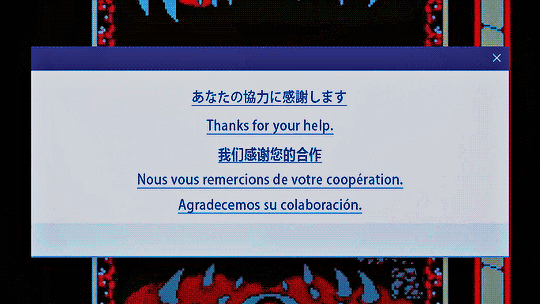


ATOM NO KO (2022) | EP 01
For example, you need to open the same door thousands or tens of thousands of times. You need to try millions of combinations of all sorts of items. You know, this game was released 6 years ago. All the bugs have already been identified. To find one now, would be like finding a needle in a haystack in the middle of a huge field. So what? A desperate woman can’t afford to get discouraged. Don’t underestimate me.
#atom no ko#atomnokoedit#jdramaedit#yamazaki kento#kishii yukino#my gif#flashing gifs for ts#fire for ts#allank#well here we goooo#i loved the first ep so much!!!!!
74 notes
·
View notes
Photo
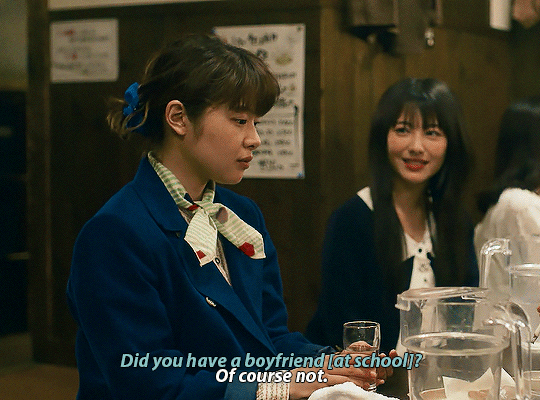




One Day, You Will Reach the Sea (Nakagawa Ryutaro, 2022)
#one day you will reach the sea#hamabe minami#kishii yukino#jdramaedit#worldcinemaedit#im halfway through this i just had to take a break to cry and gif#d.gif
155 notes
·
View notes
Text
Koisenu Futari Review by a Fellow AroAce
Disclaimer: anybody commenting to tell aros and aces how to feel or their two cents on what’s wrong with us will be blocked right away. 🖤

2023 has just begun, and the calendar has already changed to the later part of February. It’s that time of the year again. I bet you’re thinking I’m talking about the infamous Valentine’s Day that has already passed 10 days ago. But no, I’m talking about Aromantic Awareness Week that spans from this 19th to 25th February, today. I’m mad amused that it falls in this so-called ‘month of love’. I’ve been awaiting it since last year to finally write a review for the J-drama Koisenu Futari, and I couldn’t ask for a better timing! Oh, love is in the air? I’ve arrived to spray anti-love aerosol! Right about when the others were busy posting in celebration of 14th February, I started writing this in order to make the existences of aros and aces known to more people. Beware of little spoilers here and there in the review. It’s no big deal though, watching the happenings firsthand is more important than the end results for this story.

Koisenu Futari begins with the fateful encounter of two people who feel neither romantic nor sexual attraction. Kodama Sakuko always feels out of place whenever the topic of romance comes up. It doesn’t help that she’s a grown up woman with a younger sister who’s already married and has a child. Her mother’s continual insistence for her to follow the same path soon makes even the time with her dear family feel oppressive. To make the matters worse, her coworkers harbor the same mindset, with seemingly no place for platonic mingling. Thanks to her job though, she crosses paths with the retail employee Takahashi Satoru, who happens to make an off-handed remark that there’re people in this world who don’t fall in love. It leaves an impression on Sakuko.
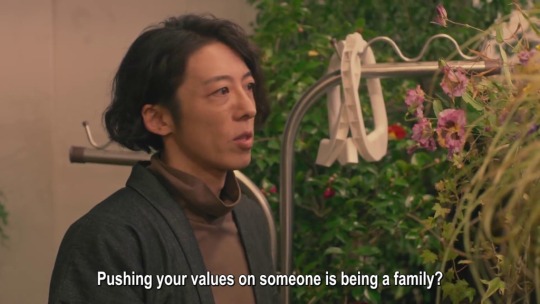
Meanwhile, she plans to share an apartment with her friend and move out of home to escape her mom’s nagging, only to be ditched by the said friend later because apparently she got back with her ex-boyfriend. Frustrated by her inability to fathom people’s fascination with romance, Sakuko searches on the internet about it in the hopes of finding something for better understanding. There, she discovers about aromantic and asexual people for the first time in her life, and feels a connection with the terms. She puts two and two together, speculating that the employee she met in the supermarket just the other day may very well be the one behind the blog post. Filled with excitement to finally stumble upon someone like-minded, she once again appears before Satoru to affirm her conjecture. As they get to discussing about their identities after the confirmation, Sakuko makes a bizarre proposition for the two of them to try living together and see if they can become a family without any romantic feelings involved, much to Satoru’s dismay. He reluctantly agrees when Sakuko manages to persuade him with the problems of both of their current living conditions along with the benefits they both get if she comes to live in his house. And so, the trial for two aroaces to become a family begins.

As someone who loves hanging around in the online aro and ace communities, and occasionally watches J-dramas, you’d probably expect me to have jumped onto Koisenu Futari as soon as it became available for the international audience. The truth is, I went back and forth for several months before finally sitting down to watch it. Because it revolves around a subject matter that’s very close to my heart and precious to me, I had all the more apprehensions that it might misrepresent us, dance around the concept of being aromantic and asexual without using the specific terms given it’s a Japanese production, and most importantly – an ending that wouldn’t be satisfying for the actual aros and aces. Let’s be honest, it’s difficult to imagine adult aroaces leading happy lives to their likings amidst the busybody culture. I’m usually all for pragmatic conclusions, but it was that one exception when I didn’t want a reality check.

Now that I’ve finished the full series, did my misgivings hold true? I’m not gonna dillydally and straight-out say it: absolutely… not! However, don’t take this to mean that it’s gonna be a smooth ride. Because from time to time, the turn of events will make you step back and think to yourself, ‘I don’t like this if it’s really going where I think it’s going’ or simply have qualms about how they’re gonna handle a certain predicament. That was the reason why I couldn’t pass a judgment on the show until nearing the end. Several incidents arise in such a short drama, and thankfully every single one of them got an agreeable closure in the end. With the last dilemma of Satoru following his dream versus Sakuko keeping their family together resolved, I must say that I couldn’t ask for a better finale. It’s hands down one of my favorites, the most fulfilling and gratifying ending in a piece of media.
Speaking of Sakuko and Satoru’s ‘family without romantic feelings involved’, which they like to refer to as “family (subject to change)” for the lack of better words, it can essentially be described as a queerplatonic relationship. I’m not gonna explain what that is for those who got a question mark over their head right now. You can check out this TikTok video that clarifies it better than I ever could in a few sentences (that one time TikTok became accurate and helpful). One thing though, take what I said as more of a headcanon than an absolute truth. Because it took me a while to take a step back and remind myself that a relationship is queerplatonic only when the people involved in it decide to define it as one. Otherwise, it’d be no different than alloromantic people forcibly claiming a non-romantic relationship is “romantic” regardless of the said pair’s negation just to suit their own fancy. But I’m pretty sure the real reason in the case of Koisenu Futari is because the term “queerplatonic” just doesn’t exist in Japanese, and they’re not familiar with this English word either. Yep, that’s one of my initial doubts right there.
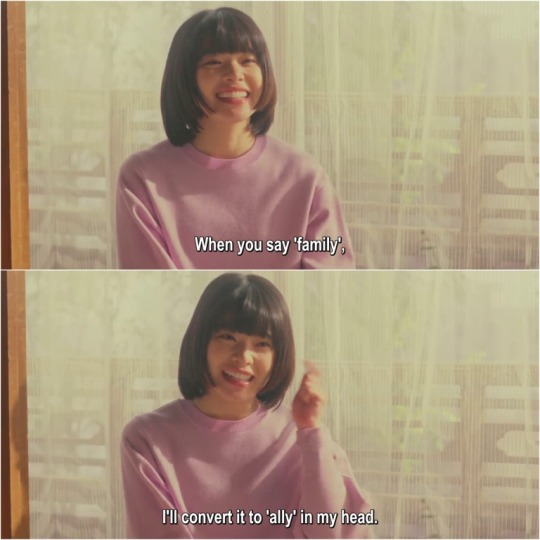
It’s fine though, because the two fundamental and crucial terms are there at least. That’s right, the words “aromantic” and “asexual” have made their way into the Japanese vocabulary! Albeit, they’re said in the Japanesque style. Given how the Japanese people speak English words, I thought the abbreviations – “aro” and “ace” – would be pronounced as “âro” (アロ) and “ēsu” (エース). But they turned out to be “âroma” (アロマ) and “âseku” (アセク) instead, short for “âromanchikku” (アロマンチック) and “âsekusharu” (アセクシャル). Though, â might be the wrong phonetic in these cases. I guess I should’ve known, since Japanese people have this habit of taking English words and shortening them to their liking for convenience. Though, I’ve found that there is one actual Japanese word for asexual, musei (無性). But of course, it pertains to reproduction. And it’s no surprise either that there doesn’t seem to be any word for aromantic. Ah, the temptation I feel to crack the notorious ‘asexuals are plants’ joke right now…
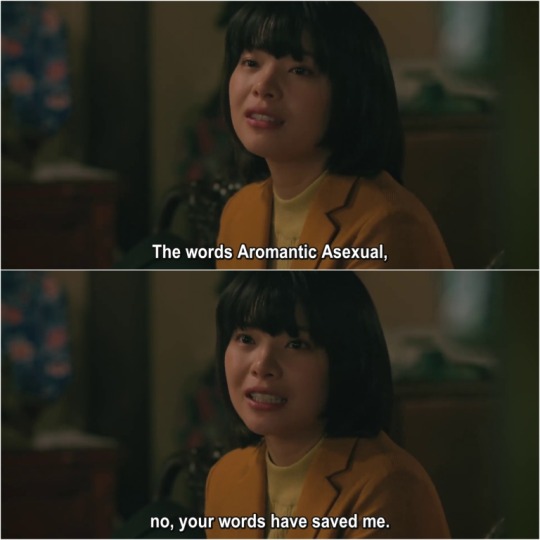
Ahem! Forget that for now, because I’m about to impart an illuminating piece of information that I picked out thanks to Koisenu Futari. It’s revealed in one episode that in Japan, the very word for “romance” was conceived in the Meiji era (1868-1912), and the values associated with it were nonexistent prior to that. Doesn’t it almost sound like romantic attraction is a concoction of the modern period, similar to how queerphobics complain that aromanticism, asexuality and other queer identities are newfangled fads? When you put it that way without further context, it probably does. To fully understand what this fact actually entails, we need to elaborate on the said Japanese word, “ren’ai” (恋愛). Take this with a grain of salt as I’m not an expert, but from what I’ve gathered so far with my limited knowledge of the Japanese language as well as the culture, renai is more about the whole affair of finding a love interest, getting into a romantic relationship, and engaging in sexual activities than it is about the matter of attraction itself. So, in essence, it’s not opening up a debate as to since when the Japanese people have started feeling romantic attraction, but rather when the idea of pursuing romance came into being in the land. Having played otome games set in the Meiji and the consequent Taishou era (1912-1926), I can tell that taking a lover wasn’t a common practice back then. Sure, those aren’t the most accurate and reliable depiction of history, but when even dating sims can’t play it up, that speaks for itself.

Looking at Japan isn’t even necessary to recognize the veracity of the bottom line of this. Coming from an Asian country myself, once upon a time, romantic relationships were frowned upon like it was one of the biggest disgraces to ever happen to a family here, if not the biggest one. Nowadays, most families have grown to become more accepting of young adults getting into romantic relationships and marrying a partner of their choice, what with dating becoming more and more of a commonplace. It’d be fine if that was all there was though, but it has reached the point where I went to listen to a popular native podcast of ours around the time of Valentine’s Day, and it started with the anecdote of a high school guy asking around on social media if it was abnormal for him to not have a girlfriend yet, and if he should do something to find someone. The face I was making then was probably a sight to behold, since I instantly turned into a fine real life specimen of the “IGHT IMMA HEAD OUT” meme of Spongebob. That, my reader, is what we call amatonormativity.

All this fuss about being single isn’t so much about attraction as it’s about compulsively following specific customs just to fit in with everyone else (not saying everyone who desires a romantic relationship is like this), as if we’re all dolls with the same features, manufactured together in a set. If we’re really going with the excuse of loneliness, wouldn’t it mean the humans, living in the olden days when romantic partners weren’t prevalent and corporations didn’t promote Valentine’s Day for the sake of profit, were the loneliest of all? And if it’s because it’s in our nature to want to be loved and cared for, how come many of the present-day surveys and statistics tell us that humans are suffering from loneliness more than ever before as the time goes on, when everyone’s getting into romantic relationships left and right? Doesn’t it seem to say something about today’s attachments and connections that are so sought-after? You’ve probably heard of the saying, “gender is a social construction.” Now if I may, hoping I won’t be skewered and grilled for this, “romance” is a social construction. Emphasis goes to the quotation marks. It makes sense when you learn about all the different kinds of attractions that exist, and how they can be mutually inclusive when it comes to certain actions, varying from person to person.

I may have gotten somewhat derailed from the review, but it matters not. The focus of it isn’t just on Koisenu Futari being a J-drama, but spreading awareness about aromanticism and asexuality. Besides, I can imagine Satoru nodding in agreement with me and saying the same. Throughout the series, he often talks about amatonormativity with Sakuko and sometimes the others. That was a characteristic absolutely indispensable for him as well as the drama to be so relatable to the aros and aces. Screwing with rubbish societal norms isn’t enough, the need to rant about the dozens of distresses that suck the life outta us day in and day out is at the center of this ordeal. He’s an excellent embodiment of our thoughts and feelings. On the other side, Sakuko finds herself in messes that are the pictures of of our day-to-day troubles.

The pair’s contrasting personalities also create a great juxtaposition for two aroaces. From my observation, for Sakuko, her aromantic aspect is prevailing to her identity; while for Satoru, it’s his asexuality. Sakuko is amicable, social and cherishes those dear to her. Romantic interests of the others towards her, however, puts her at a loss. Her encounter and conversations with Satoru – who’s the only aroace she personally knows – helps her to gather her thoughts regarding her orientation and get better at dealing with those situations little by little. In turn, living with Sakuko and spending time with those around her gradually alleviates the emptiness in Satoru’s life left by the death of his dearest grandmother. He has always carried around regret in his heart for being unable to confide in the only person close to him about his identity, as well as his incapability to grant her a grandkid when he was her only family. After all, not only is he a sex-repulsed ace, but touch-repulsed altogether. To top it all off, the meddlesome attitudes and comments from his surroundings have him jaded, so much so that he doesn’t even want the understanding of others. When communication fails again and again because people refuse to see things from someone else’s perspective or just accept them as they’re due to their fundamental differences from each other, shutting them off may be the only option left. His no-nonsense, solitary disposition very much resonates with me, although personality-wise, I may or may not appear closer to Sakuko on the outside.

Setting aside the protagonists, I must bestow the titles of honorable mention and best side character to Matsuoka Kazu. Don’t get your hopes up right away though, because he’s gonna get on your nerves as soon as he gets involved with the plot. He’s the personification of the traits that make aros and aces roll their eyes, being insufferable at times. You’re probably gonna hate him, which you’re supposed to, until you start appreciating his character development. He goes from the greatest menace to the greatest supporter of Sakuko. Not to mention, I couldn’t have discovered the above-mentioned history of “renai” without him, since he’s the reason why Satoru goes off lecturing about it! Honestly, our lives would be much gentler if more of the aphobics could grow to be thoughtful of us like he does. Even Sakuko’s family members come around to a considerable extent. I was touched by her parents’ acceptance of her, albeit one outright and one reluctant. Meanwhile, her sister’s story is a good example of how life’s rhythm can be easily thrown off when it’s mainly build around just a romantic partner.

Keep in my mind though, this is a Japanese show, so it goes without saying that the narrative is going to follow the style of their dramas. The biggest complaint I hear in regard to J-dramas is that they contain too much of overacting, and I can totally see where it’s coming from. Koisenu Futari though, in my opinion, is the opposite of that. Subtlety is an integral quality of it, not that there is no exaggerated reactions whatsoever. Sakuko and Satoru in particular make these faint yet distinct facial expressions that seem to say more than their words. Their respective stars, Kishii Yukino and Takahashi Issei, were the perfect choices for the roles. Takahashi Issei’s acting especially feels like Satoru’s character was made to be portrayed by him. They even share the same surname and all! I was surprised and delighted to find out he’s the one who voiced Amasawa Seiji, the deuteragonist of Studio Ghibli film Whisper of the Heart. Acting is acting, I guess. As for the supporting cast of Koisenu Futari, the performances that stood out in my eyes were Sakuko’s longtime friend Kadowaki Chizuru, played by Kojima Fujiko, and Sakuko’s father Kodama Hiromi, played by Koichi Mantaro. They left an impression on me.
In spite of all the praises I’m singing about Koisenu Futari, I still can’t say that I’d absolutely recommend any and every aromantic and asexual person to watch it. This might sound like it came from the left field, but it’s actually for their sake. Because this isn’t as simple as a fantasy show or something where two characters are specified to be aroaces since they couldn’t care less about romance and sex. Rather, it’s a true-to-life depiction of the issues that come with identifying with these labels. The alienation and loneliness resulting from being “different”, falling apart of friendships due to romantic interest of the other party, vexation stemming from the inability to relate and thus empathize with those going through heartbreaks, aphobic belief that aros have it easy just because they don’t have romantic entanglements to worry about, family and societal pressure to get married and have kids, apprehension regarding the future that’ll likely be lonesome otherwise — all these difficulties experienced by aros and/or aces are remarkably brought out. In short, the plot is all about trying to navigate this world full of amatonormativity, heteronormativity and allonormativity. And as much as it feels great to see our representation, such a high level of relatability also means it can be triggering to see the exact same things that distress us in our everyday lives.

I, for one, was left overwhelmed by the very first episode. Sakuko’s excitement over the initial living arrangement with her friend reflects the deepest desire of my heart that has been there since forever. I’m definitely not the only one; for many aros and/or aces, it’s a situation that’s considered a dream come true. Except the ingrained relationship hierarchy, where romantic partners are put above everyone else, pretty much always turns it into a pipe dream. After finishing that episode, I had to sit in silence for a while, trying hard to contain my emotions. On top of it, what occurs between the two of them later hit too close to home, again. Watching it unfold almost felt like a personal attack, the thought ‘I’m in this drama, and I don’t like it!’ running through my mind all the while. However, I have to admit that the last scene of the drama makes it worth it. The image of Sakuko happily cycling down the road with the most heartfelt, carefree smile on her face screamed freedom to me. Then revisiting the drama in order to write this review aroused the displeasure in me along with the appreciation all over again. It’s really up to how much an individual viewer can take depending on their mental state.
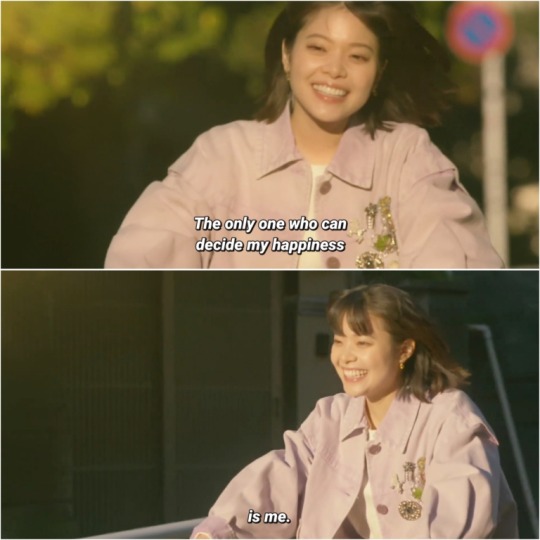
For alloromantic and allosexual people though, I’d definitely recommend them to complete Koisenu Futari. Not merely because otherwise they’d be missing out on a wonderful show, but mostly because it’s important that they come to see things from aromantic and asexual people’s viewpoint. Of course, for one thing, you can avoid upsetting them and treat them right when you know better. Now, you may ask, what’s the odd of you running into an aro and/or ace when those’re such rare orientations? The thing is, many of us go through an identity crisis at the beginning because we’re never taught about the very existences of aromanticism and asexuality in the first place. It needs to become a common knowledge like homosexuality, bisexuality etc. Even when we do get to know who we are, we still feel the need to keep this intrinsic part of our personality to ourselves because of ignorant people’s hurtful attitude. So, if you’ve already proved yourself to be uncomfortable for the topic, the possibility of you being privy to the fact of someone you know being an aro and/or ace is very low in the first place.

This obliviousness isn’t harming only aros and aces though, it concerns you, and your near and dear ones, too. Why do I say that? Well, once you step into the world of aromanticism and asexuality, your eyes will open to a whole bunch of problems around us, as well as a whole lot of ways of life. Namely, the clutch that amatonormativity, heteronormativity and allonormativity have on us, and how liberating living can be if you get to defy them. I can’t go into the details of what they mean in this review. You can always search on Google and Tumblr to learn their definitions, etymologies and implications. All I’ll say is that the Four Horsemen (including platonormativity) of the ‘love and sex are what make you human’ bullshit go hand in hand with misogyny, sexism, toxic gender stereotypes, toxic masculinity, domestic violence, colorism, body shaming, ableism and many, many more severe social issues. It’s impossible to escape them so long as you live in the society. So when you really think about it, being aphobic is basically advocating for your own victimization and/or decadence. Although, I suppose something as ridiculous as aphobia prevails at all is because the mere existences of aros and aces challenge the beliefs and learning that alloallo people have nurtured throughout their lifetime. It’s human nature to feel threatened by something they don’t understand. But on the other hand, broadening your worldview with the aromantic and asexual perspectives serves to benefit you regardless of your orientation. Personally speaking, even if I don’t identify as an aroace someday, I’d still be grateful for everything I’ve been taught thanks to it. I wouldn’t exchange this experience and thought process for anything.
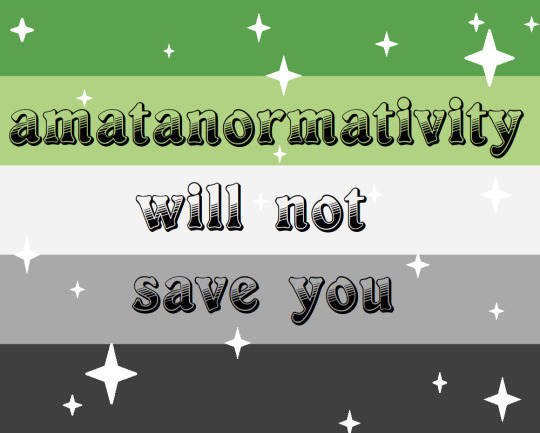
If there’s one flaw of Koisenu Futari though, it has to be its approach of aromanticism and asexuality being largely inadequate. The matters are explored through the two protagonists only, resulting in a limitation as to which facets of the orientations can be introduced to the viewers. There is this one time when Sakuko attends a gathering of aros and aces, but it’s way too short to put enough emphasis on the briefly discussed topics: the spectrums’ independence from each other, and the variation in individual preferences. That’s right, aromantic and asexual are the umbrella terms for two separate spectrums. You must’ve already noticed my continual usage of “and/or” until now, that’s because being a part of one spectrum doesn’t necessarily connote being a part of the other. Both of them also consist of a wide range of microlabels, and those’re contradistinctive at times. I daresay, compared to the entire populace of the rest of the world, I’ve witnessed way more diversity in these tiny communities that’re more or less close to the population of Denmark. A series could cast a dozen of aro and ace characters, but many of the particularities would still end up left out. Given the acute lack of our representation in the media, a complete drama dedicated to us is already an absolute blessing. Even just two characters, who’re gateway to the plain basics, are a great starting point. That’s all well and good, but the problem is that those who aren’t well-informed with the comprehensive nitty-gritties might develop a rigid concept of the identities, and thus question the validity of those of us who don’t fit the mold.

I’d suggest alloromantic, allosexual and questioning folks to take Koisenu Futari as a stepping-stone to learn about aromanticism and asexuality. Thanks to Kaizen Subs, it’s accessible for the international audience. They did such a fantastic job with the subtitling. I don’t wish to depreciate any fansubbers who pour so much hard work into voluntarily providing English subtitles, but I also can’t deny that I often come across translations that’re far cry from the actual speeches. I was afraid the same might happen to Koisenu Futari, especially due to the lingos in the aro and ace communities that’re foreign to the outsiders. It was an utter relief to discover that it wasn’t the case. In fact, I was pleasantly surprised to find somebody else’s style of translating similar to mine for the first time as a translator. Personal reflection aside, this is your cue to watch the drama. Visit this link to download the subtitles. Just rename the files corresponding to the episode file names on your device, and it’ll make the subtitles automatically show up on the videos when you open them, whether it’s on computer or phone. Oh, and where to find the raw episodes? That question’s a no-no in public, but here goes: Đ Ɽ ₳ ₥ ₳ ₵ Ø Ø Ⱡ
My only sincere request is for people to keep an open mind, about us and about the world. Koisenu Futari’s MyDramaList entry used to have the “naïve female lead” tag before, and that was more than enough infantilization of aroaces. Look at it this way, romantic and/or sexual attractions can be considered ghosts to us. Almost everybody around us claim to be able to see them, those who’re chasing after them. They ask us why we can’t perceive them. It’s because they only ever exist in the tales of others, not in our own realm, at least not without the exact same power. Maybe some of us have barely happened to encounter them at some point, but unsure of whether those’re actual ghosts or some other apparitions. Some can only see them once in a blue moon, under specific conditions. Some adore the idea of ghosts and their stories, regardless of their ability to sense them or the wish to interact with them in person. At any rate, we all belong under the hefty green or purple umbrella, or where they both blend in to take on blue, orange and yellow colors; our very own spaces beneath the rainbow.
It’s okay if you can’t grasp our hues right away. You can take your time. If it still doesn’t help, that’s okay, too. What’s not okay is dehumanizing or demonizing us. Don’t forget that humans are abusing and destroying each other in the name of love all the time. If you believe it’s a lie or an exaggeration, then open your eyes, strain your ears and take in what’s happening throughout the world. There’re more important things than love, attraction or even comprehension. Remember that consideration, compassion, communication and consent can go a long way to bring about happiness and peace in life. Also, please refrain from shoving “B-but aromantic/asexual people can feel romantic/sexual attraction and/or engage in such activities!” and other bigot commentaries down our throat. That’ll be all from me.

Happy aromantic awareness week! It’s coming to an end soon, but may the awareness stick around.

Headers' credit: theprideful
“amatanormativity will not save you" flag credit: rjalker
#koisenu futari#恋せぬふたり#Two People Who Can’t Fall in Love#aromantic#asexual#aroace#aro week#aromantic awareness week#aromantic awareness week 2023#J-drama#Japanese drama#takahashi issei#issei takahashi#takahashi satoru#satoru takahashi#kishii yukino#yukino kishii#kodama sakuko#sakuko kodama#review by shuu#actually aromantic#actually asexual#actually aro#actually ace#actually aroace
23 notes
·
View notes
Photo






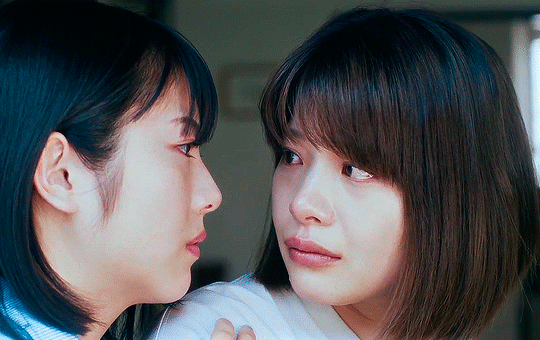
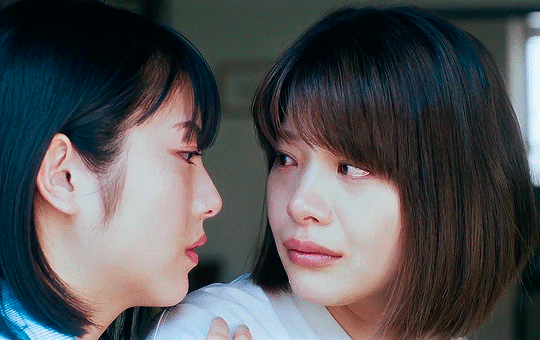

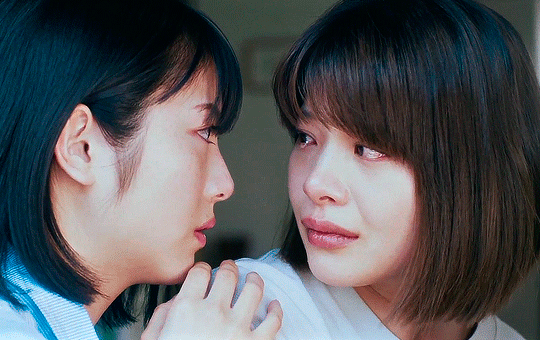
One Day, You Will Reach the Sea (2022) dir. Nakagawa Ryutaro
#one day you will reach the sea#やがて海へと届く#jmovie#filmedit#jdramasource#asiandramanet#worldcinemaedit#filmtv#filmgifs#dailyflicks#kishii yukino#hamabe minami#lextag#mymymy#ANYWAYSSSSSSSSSSSS#this SCENEEEEEEEEEEE#okay so first and foremosttt this is not particularly a confirmed wlw#i personally believe they would be if things were different but that is not the focus of this film#and i know what this movie was trying to sayyy but yeahhhhh its a hit or misss#i do wanna personally sue whoever came up with this Specific sceneeee#i didnt expect it and it hurteddeddddd meeeee#it just kept goinggggg and it became more tragic#these 2 actresses are just yessssssssssss#i love themmmm#i want a wlw jmovie RIGHT NOW pls and ty
91 notes
·
View notes
Text
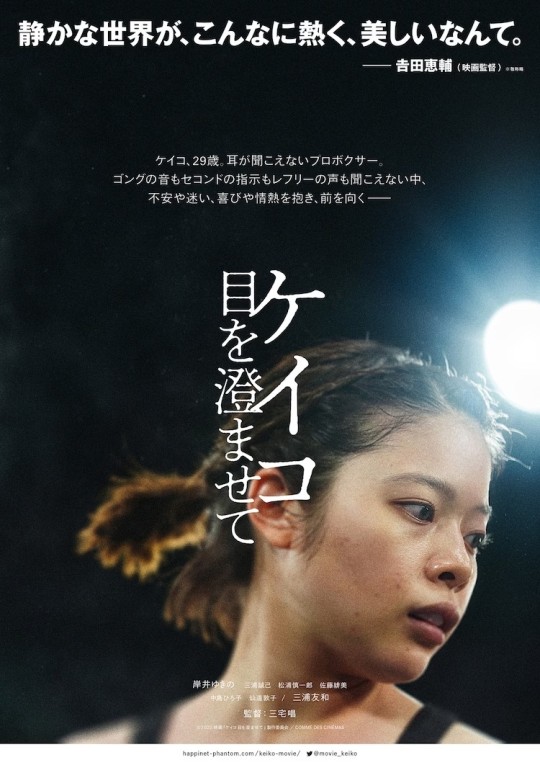
岸井ゆきの
ケイコ 目を澄ませて
19 notes
·
View notes
Text
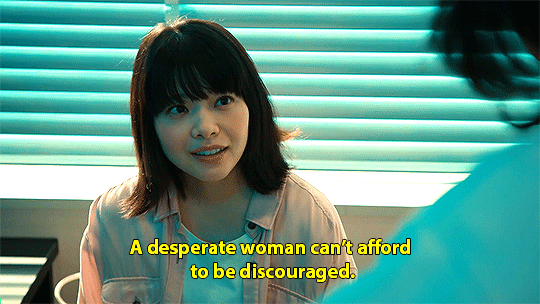

"You know, this game was released six years ago. All the bugs have already been identified. To find one now would be like finding a needle in a haystack in the middle of a huge field."
"So what?"
Atom no Ko (2022)
#atom no ko#children of atom#jdramaedit#kishii yukino#yukino kishii#really liked this line#kinda love her tbh#made#subs from blitz!!#also loved the colors from that game cafe(?)
52 notes
·
View notes
Photo


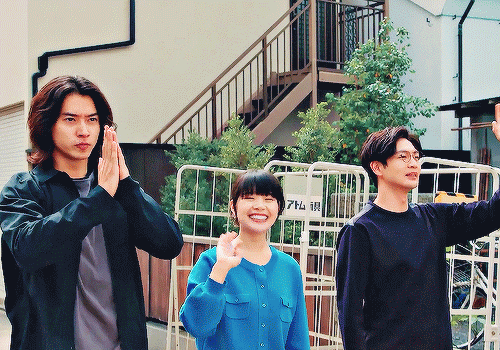




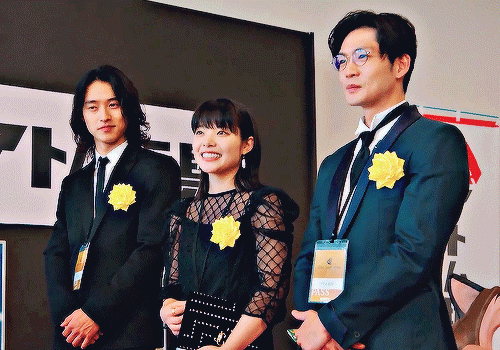
We should have sold the character, not the game. We're a toy store.
#atom no ko#children of atom#jdramaedit#userdramas#japaneseartistsinc#asiandramanet#asiandramasource#dailyasiandramas#asiancentral#mygifs#jdrama#atom gif#ep 05#subtitle credit: blitzfansub#yamazaki kento#kishii yukino#matsushita kouhei
112 notes
·
View notes


